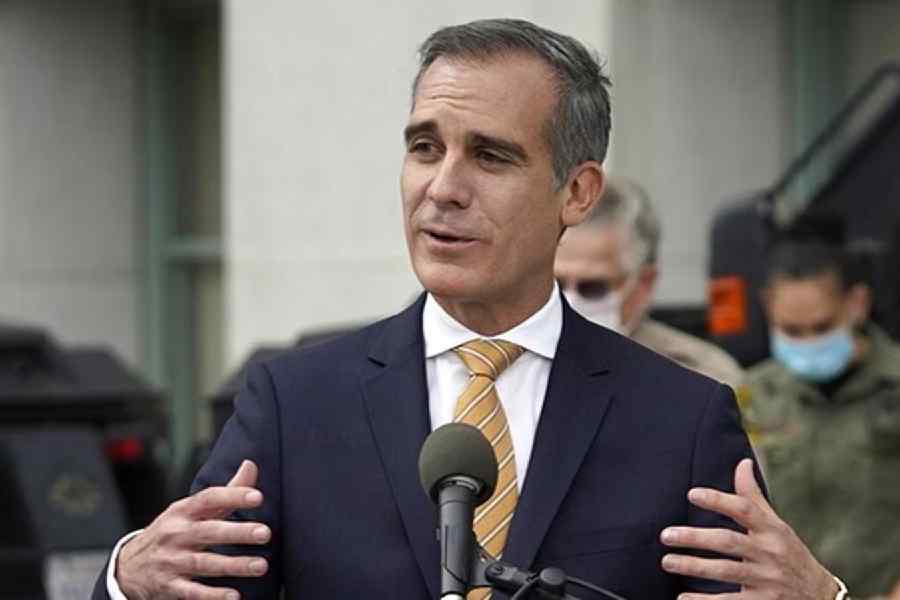The Deocha-Pachami coal block in Birbhum has taken centre stage in Bengal politics after Mamata Banerjee invited Prime Minister Narendra Modi to inaugurate the project when she met him in Delhi on Wednesday.
The Telegraph takes a closer look at the status of the project, the future of the second-largest coal block in the world and how it could help the state once mining of coal starts.
The coal block
The Deocha-Pachami coal block is located in Birbhum’s Mohammedbazar and spread over 11,222 acres. According to preliminary estimates, it has coal reserves of 2.2 billion tonnes.
About a decade ago, the coal block was allotted to Eastern Coalfield Limited (ECL), which did not take initiatives to start mining of coal for a few years.
In 2014, the centre reallocated the coal block to six states, including Bengal and a central public sector undertaking. The other stakeholders were Karnataka, Bihar, Tamil Nadu, Uttar Pradesh Punjab and PSU Satluj Jal Vidyut Nigam.
But work didn’t progress much as the stakeholders did not show enough interest in starting the groundwork. The Bengal government then wanted to take up the project alone. The coal ministry allotted the block to Bengal last year.
The state recently secured the Centre’s nod to allow the West Bengal Power Development Corporation Ltd (WBPDCL) to mine coal in the block.
Present status
The block is under the control of the state but requires a series of measures before the mining of coal can start.
First, an environmental impact assessment (EIA) study has to be undertaken. That will require at least nine months. But the state would be able to start the EIA only after it sign an MoU with the Centre, which is yet to be done, sources said.
“Once the EIA makes it clear that the project would not have a major adverse effect on environment, a feasibility study has to be conducted. If the feasibility study says mining of coal would be cost-effective, the state can float global tenders to undertake mining,” said a Nabanna official.
Another official said roping in an international agency is essential as no Indian company has experience of mining coal from such a block, which has thick overhead stone layers upto 1km.
“The recent Union cabinet decision to allow 100 per cent foreign direct investment (FDI) in mining could help us rope in an agency from countries like Australia or South Africa but we are not sure whether it would be cost-effective. We have to find out why the ECL and the majority of the states, which were given stakes in the block, did not show enough interest to go ahead with the project,” said a source.
The hurdles
The first problem is acquisition of land. The project is spread over 11,222 acres, of which the state owns only about 2,000 acres. Private individuals own about 9,000 acres.
“Here lies the biggest difficulty… We don’t have any land acquisition act under the state’s hands-off land policy. Purchasing such a huge quantum of land directly from the owners is almost impossible,” said a senior official.
The second major problem is relocating nearly 10,000 tribal people living in 35 hamlets spread across the project area.
The chief minister had announced earlier this month that the state government would ensure proper rehabilitation for the displaced people.
But her assurance apparently failed to convince the people, who have threatened to oppose the project.
Sunil Soren, convenor of the Birbhum Adivasi Gaonta, an apolitical organisation of the tribal community, said they had bitter experience in the past when stone quarries were set up on their land and they were offered a niggardly compensation.
“The government did not take enough initiatives to ensure the rights of the tribal people. So, it is now tough to convince them to get part with their plots,” said Soren.
Promised benefits
If coal is mined from the block, it will help the power sector of the state enormously. WBPDCL sources said if the mine gets operational, the power plants of Bengal would not face any shortage of coal for the next 70 years.
At present, WBPDCL has assured supply of 14 million metric tonnes (MMT) of coal annually against a demand of 24 MMT to run its power plants. Besides, the state can earn handsome amounts by selling off surplus coal to other states if mining is possible in the block.
This apart, the state government believes around 1 lakh jobs will be generated once the mine becomes operational.
The ruling Trinamul can stand to gain ahead of the 2021 Assembly polls if the project is inaugurated ahead of the election.
“There was no major investment in the state since the Trinamul came to power in 2011. If the chief minister can inaugurate a project that has a potential of generating 1 lakh jobs, she would definitely get an advantage ahead of the Assembly polls,” said a bureaucrat.










